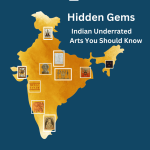The history of Allagadda stone carving dates back to the 16th century when the Vijayanagara Empire ruled the region. The art form was patronized by the kings and wealthy merchants who commissioned the artisans to create beautiful sculptures and carvings for their temples and palaces. Over the years, Allagadda stone carving has evolved to become one of the most significant art forms of the region.
The process of Allagadda stone carving begins with the selection of the stone. The artisans look for stones that are soft and easy to carve. The sculptors widely use Sand Stone locally called Isula Rai and Krishna Shila Stone( Black Stone) locally called Pesara Rai. Once the stone is selected, the artisans use traditional tools such as chisels, hammers, and drills to carve intricate designs and patterns on the stone. The designs are often inspired by nature, mythology, and religious themes.
One of the unique aspects of Allagadda stone carving is the use of negative space. The artisans often carve out patterns and designs in such a way that the stone itself becomes an integral part of the artwork. The use of negative space creates a sense of depth and adds an element of mystery to the artwork.
Allagadda stone carving has a wide range of applications. It is often used to create sculptures, pillars, and architectural elements for temples and other religious structures. The art form is also used to create decorative items such as lamps, vases, and wall hangings. Many artisans also create custom pieces for individual clients, such as personalized nameplates and house signs.
The art of Allagadda stone carving is a dying art form. Many of the younger generation are not interested in learning the art, and there is a shortage of skilled artisans. However, efforts are being made to preserve the art form. The government of Andhra Pradesh has recognized Allagadda stone carving as a traditional art form and has provided support to the artisans. NGOs and other organizations are also working to promote the art form and provide training to young artisans.
Allagadda stone carving is a unique and beautiful art form that has a rich history and cultural significance. It is a testament to the skill and creativity of the artisans who have dedicated their lives to mastering this craft. It is important to preserve and promote this art form so that future generations can appreciate its beauty and significance.





